Small but important parts can either improve or put your life at risk if you’re driving on the road, and a wheel bearing is no exception. Such vital components help in allowing smooth tyre rotation, support the weight of a vehicle, as well as maintain stability. However, once in a while, such bearings might start failing, and this may be quite dangerous when ignored since they make one uncomfortable by producing unusual sounds indicating that there is something wrong with them. The purpose of this blog post is to help you identify the symptoms of a bad wheel bearing and share some practical tips on how to respond effectively to these problems. Being proactive will not only keep your car running smoothly but also avoid expensive repairs later on.
What does a bad wheel bearing sound like?
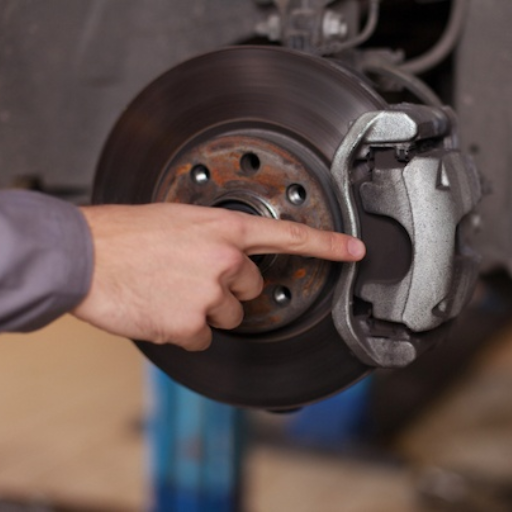
A worn wheel bearing usually sounds like a bad growl, or hum, or even a rumble, and this sound grows more as the speed of the vehicle does. Furthermore, the sound may differ with the severity of the issue; you may hear a click or even the snapping of a sound while turning. These sounds are significant alerts and should be checked immediately to prevent further damage or safety hazards.
Distinguishing wheel bearing noise from road noise
the difference between wheel bearing noise and road noise is about spotting certain patterns. Wheel bearing sound may vary with speeds and can get a bit louder when the vehicle is turning due to the shift in weight on the bearing. However, road noise is quite continuous and is dependent on the type of tire, the kind of road it is, or the conditions under which the vehicle is driven. If, for instance, you still feel unsure, I suggest trying on various roads or while turning the vehicle. Such slight indicators of some issues can indeed assist.
Common sounds: humming, growling, and howling
Definitely, I can assist you in interpreting these discrepancies and also give you some tips. Noise diagnoses are the first thing to consider before narrowing down to a few issues. Here is a breakdown that will make it simpler to understand:
- Speed Dependency: If the noise begins, changes, or gets stronger with a change in speed of the car, Get the wheel bearing issues sorted as that’s a good indicator. Most of the time while driving, there’s a low toned hum or growling sound which gets louder with speed; these appear to be the work of a bearing.
- Turning and Weight Shift: How the noise acts while turning deserves special attention, indeed. Usually, damaged wheel bearings do pop, and tend to pop with varying weights; this is not a problem per se but aids with turning left and right, the noise may change in amplitude with the turn.
- Road Surface and Tire Type: While wearing the tires, once again with an error, saying ‘during turning,’ the road makes a lot of noise. If the noise is constant regardless of the speed or the turning then, look into the pattern of the tires, rough or smooth road, and even wheel pressure.
If you go by these breaks, you will see the problem much clearer. I would advise trying to do a quick drive around a very quiet place and see if the noise can be located. Sometimes, even little things like fine-tuning your radio volume could actually make a big difference in telling what you are hearing exactly. Bear in mind that humming, growling, or howling sounds are clear signals that must not be ignored; hence, they should be handled at their early stages in order to avoid more expensive complications later!
How wheel bearing noise changes with speed and cornering
wheel bearing noise usually gets louder as the speed increases. At lower speeds, it may be almost inaudible or barely noticeable, but once you step on the gas pedal, it will transform into a roaring growl or a low-pitched hum that becomes unmissable. When you corner, this is another good indicator— if the sound gets louder when turning in one way while decreasing when going around bends on the opposite side, then definitely one of your wheel bearings is failing. Thus, monitoring such shifts will enable the identification of exactly which bearing has gone wrong and the resolution of this challenge without causing further problems.
How can I tell which wheel bearing is failing?
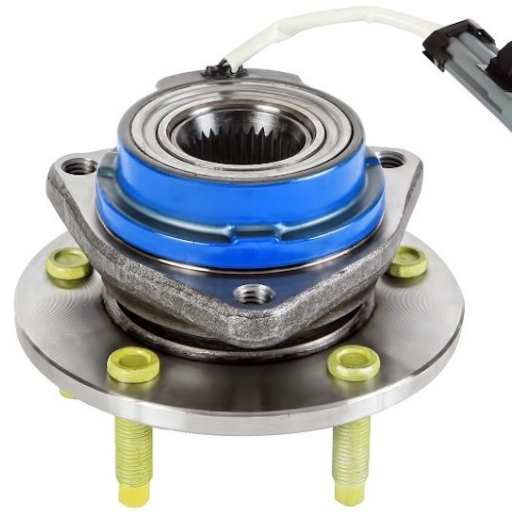
While operating your vehicle, pay attention to sound changes, which can help you isolate which wheel bearing is faulty. Usually, wheels that have an issue bear a loud mix of growling and humming, but this sound definitely increases when you pick up speed. Still a little unclear? Allow me to explain – let’s suppose the sound increases on one side while turning and decreases while on the other side, through this you can pinpoint which side’s bearing is faulty, the one which is more loaded in the turn and results in the sound being on the louder side. This method in conjunction with a professional evaluation (if required) makes it easy to identify the issue.
Locating the source of the noise while driving
I tend to pay attention to sound changes when trying to identify the source of the driving noise, and in my opinion, this is a good strategy. Throughout my career, I have noticed a trend where a constant drone or growl, which further intensifies with speed or turns, is indicative of a broken wheel bearing. I suggest performing a managed driving test, and the reason for this is to see if the noise becomes louder or softer when we move in a clockwise or anticlockwise direction. This is quick and easy but will enable us to gauge the specific side of the vehicle that is making the noise. If it’s still not clear, then I recommend seeing an expert to validate the diagnosis and make sure that the driver is safe.
Using a jack stand to inspect individual wheels.
To ensure the efficiency of wheel bearings, one may use a jack stand to check out each and every wheel. First, use a raise to lift the car up high and place it on a stable support. While raised off the ground, spin the tire with your hand just to listen for any weird noises, such as grinding or clicking sounds. Also, keep in mind that you should check for lateral play by placing your hands on top of the tire at either end and pushing it side to side. All these instructions will enable you to know if your bearing is good or bad, hence whether it needs replacement or fixing. Examinations must be done properly employing correct tools and methods so as to enhance safety all through.
What are the symptoms of a bad wheel bearing besides noise?
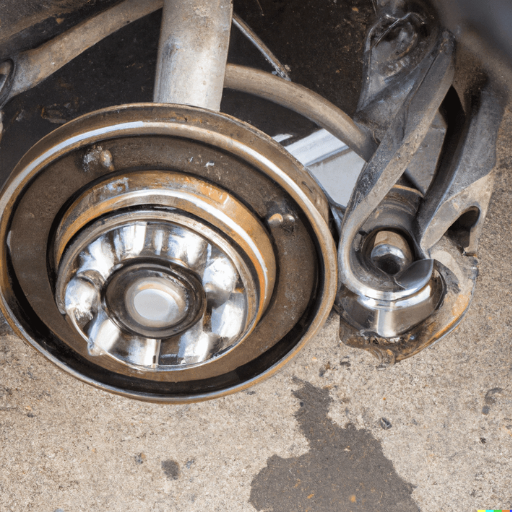
Sure! There are certainly some symptoms of a bad wheel bearing other than abnormal noises. Here is what you ought to check:
- Vibrations in the Steering Wheel –Feeling and experiencing constant vibrations on the steering wheel while driving, especially at higher speeds might signal a damaged wheel bearing. The vibration occurs because the wheel bearing or the wheel itself is already damaged and cannot smoothly rotate.
- Uneven Tire Wear – Other than causing uneven wear patterns on the tires, a failing wheel can cause the same on the other. Imagine if the tire is misaligned or loose because of the broken bearing. All of that stress on the tire gets transformed from loose ends to tightly wound up which results in certain locations on the tire getting scratched up too soon, so it does add wearing patterns.
- Vehicle Pulling to One Side – When a wheel bearing has gone bad, one of the after affects is there will be excessive drag on one side of the vehicle. This makes the vehicle point in one direction slightly more than it is naturally supposed to. Such issues tend to be more pronounced in cars driving on straight roads or when the car is hampered or stopped.
- ABS Malfunction Light –Bearings that have integrated the wheel with the anti-lock braking system are most likely to generate a malfunctioning ABS alert warning light. The ABS warning light appears due to a failure within a wheel bearing that could to some degree inhibit the sensor from accurately interpreting rotational wheel speed.
- Instability or Wobbling –Whenever a wheel bearing has undergone extreme tear, there’s a high likelihood of rot about the bearing while driving. This movement while driving can impose a lot of danger on control steering.
- Burning Smell Near the Wheel – A heated wheel bearing is known to create great friction which in some cases heats up too much and starts sparking. The overheating can lead to an unusual burning smell while driving the particular wheel.
Remember, the symptoms of a car accident are not the same for everybody. Quick action on each of these signs can save your vehicle’s life and relieve you of further expenses in other auto parts. If there is any doubt, seek a professional mechanic’s assistance.
Uneven tire wear and its connection to bearing failure
uneven tire wear often points to underlying mechanical issues, and one common culprit is wheel bearing failure. A worn-out or damaged bearing can cause the wheel to wobble or misalign slightly, leading to irregular pressure distribution across the tire surface. Over time, this uneven pressure results in accelerated tire tread wear, typically more pronounced on one side. Addressing bearing issues early is essential not only to prolong tire life but also to maintain proper handling and safety on the road.
Steering wheel vibrations and handling issues
Car mechanics and technicians are often the ones to address any steering wheel vibrations and handling concerns caused by factors like wheel imbalances, wheel alignment, or even issues with the car’s suspension frameworks. These car issues are critical in ensuring vehicle stability, driving comfort, and greater vehicle lifespan. Thus, quick attention needs to be given to address these concerning car amplifications. With the technological advancements in today’s day and age, steering wheel vibrations and handling concerns can be resolved by professionals with the help of a professional vehicle inspector.
Effects on brake performance and safety
uneven tire wear is usually an indication of other mechanical problems, a common one being wheel bearing failure. This will cause the wheels to wobble or become slightly misaligned and so exerting uneven pressure on the tire surface. Over time, this leads to abnormal division of pressure across the tire, hence increasing the rate at which all treads wear out, though one side tends to be affected more. It is important to sort these issues in their early stages because it prolongs the life of your tires and ensures that there is adequate control when driving on the road.
Can I drive with a failing wheel bearing?
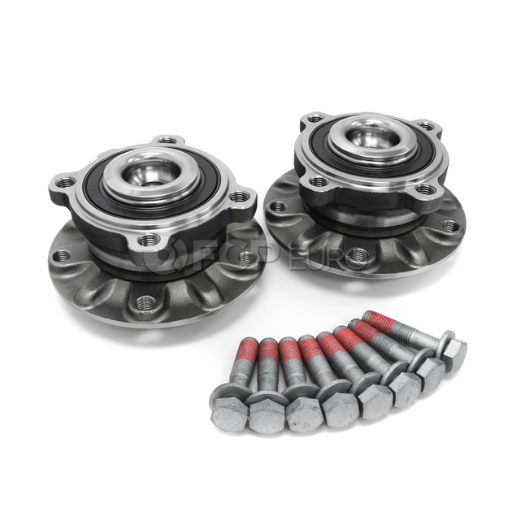
I would strongly advise you against driving with a wheel bearing that is failing. Safety hazards are posed by a worn-out wheel bearing, ranging from unpredictable wheel movement to excessive wear on other parts and, in extreme cases, detachment of the wheel. The sound may be low at first, but overlooking such signs can lead to threats while driving. In case of such an occurrence, it is advisable to fix it without any delays—take it from me that immediate action will prevent costly repairs and unsafe road experiences.
Risks associated with continuing to drive
Driving with a failing wheel bearing is highly precarious, and there is nothing I can say that will stress it enough. Here are some of the major risks you would be subjecting yourself to if you opted to continue driving without fixing this problem as soon as possible:
- Tire Wear and Damage: Poor wheel bearings can lead to uneven distribution of pressure on tires which causes pre mature wearing out of the tires. If the issue is not fixed quickly, these tires become prone to blowing out.
- Compromised Vehicle Control:Bad wheel bearings are detrimental for the stability of vehicles in general and this is exacerbated when making any turns or sudden movements. This may also lead to an increased chance of an accident occurring especially in harsh weather or uncomfortable road conditions.
- Excessive Heat Build-Up: If the bearing gets too hot, it will begin to create excessive heat which as a result will inflict damage on surrounding components such as the brake drums or axles which would need expensive repairs.
- Potential Wheel Detachment: If an individual continues to drive a car with a worn out wheel bearing, there is a possibility that the mobile wheel bearing may detach from the vehicle; however, this is extremely rare. Losing this bearing is extremely excruciating both in terms of damage to vehicle and other drivers on the road.
- Brake System Impact: Imagine driving a vehicle with inappropriate brake realignment, that’s the risk that’s posed with damaged wheel bearings which in turn makes a vehicle more prone to taking longer to halt especially in critical brakiing situations.
These issues can be avoided, and thus, I never cease to urge clients to take the necessary action quickly. Get your wheel bearings checked immediately, and more importantly, if you hear grinding, humming, or feel vibration while driving, replace them if required. I assure you that fixing an issue quickly is cost-effective and also protects you and other people driving on the road!
How long a bad wheel bearing might last
The length to which a bad wheel bearing might last is highly dependent on how severe the damage is and your driving behavior. In my experience, a defective wheel bearing may last as little as several hundred miles of driving if the issue is slight; however, under more severe circumstances, it can fail instantly. Regardless of whatever you do, never drive with a bad bearing because, besides making it worse, driving like that also increases the chances of complete failure that might end up putting you into very dangerous situations on the road. Just don’t take chances. The moment it goes wrong, have it examined in order to avoid expensive fixes or accidents.
Signs that indicate immediate replacement is necessary
When identifying the signs of a bearing that needs to be replaced urgently, there are a number of important red flags you should never overlook. Based on my experience in the industry, here’s what I always advise watching out for:
- Unusual Noises
Grinding, roaring, or a low growl coming from the wheel area can be regarded as a sign of failure and that the bearing is wearing down. This happens because the bearings aren’t smooth anymore and the friction between those components begins to kick in. It is an indication that action needs to be taken if the noise becomes louder while turning or altering speeds.
- Excessive Wheel Play
Every time that you shake the steering wheel, if it feels loose or wobbly, that is a bad sign, and this huge movement has caused the bearing to deteriorate which then bears dowgraded structural integrity allowing for unsafe driving conditions.
- Vibration While Driving
Bearing damage can easily be diagnosed when there are vibrations or shaky noises coming from the steering wheel especially while cornering or during an acceleration. And these vibrations will usually get worse as the problem continues to develop.
- ABS System Warnings
A bad wheel bearing can create some issues with the anti lock brake system. If you see the ABS warning light blinking on your dash board, along with noise and vibration then bearings may be the problem.
- Uneven or Excessive Tire Wear
Bearing damages may create uneven load on all your tires which may cause non uniform tire wear. If you notice strange wear in your tires even after normal rotation and inflation then the bearings may need replacement.
- Overheating Hub
After you’re done driving, if you notice a burning smell and extreme heat around the hub area then it may indicate damaged bearings which tend to heat up unnecessarily. This can further worsen the component and aggravate the situation.
If you observe any of these issues, take immediate action. Addressing them promptly not only reduces the risk of costly damage to other parts of your vehicle but also ensures your safety on the road. Always listen to your gut and prioritize having it checked by an expert in case you’re in doubt—it’s better to be safe than sorry!
How do I diagnose a bad wheel bearing at home?
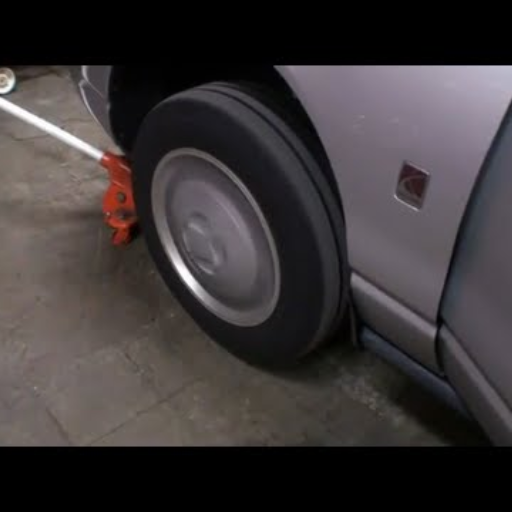
Many people I’ve helped have been able to diagnose bad wheel bearings themselves, and it doesn’t have to be too difficult. Initially, you should pay attention to unusual noises such as grinding sounds, humming sounds, or growling sounds while driving—these may increase in volume with acceleration or when making turns. Then, lift the car up and shake the wheel hard, both forwards and backward, so as to identify whether there is any extra movement in the wheel; it might be a sign of problems related to the bearing. Finally, rotate the wheel by hand and check for any roughness or resistance. However, remember that these steps are not conclusive; therefore, seek professional help for accurate diagnostics.
Performing a safe test drive to identify symptoms
The most effective way I have determined whether healing should be needed is by conducting a safe test drive. The way I usually start is by hovering over a safe area that is reasonably spaced out and allows me to feel and hear how the vehicle operates. During this period, I try detecting grinding, growling, or humming, as these are signs of worn wheel bearings. Moreover, if there is any vibration while steering the vehicle or gripping the wheel, it is also concerning as it could mean the vehicle is pulling to one side. Rotating the vehicle at a slower and faster range of speeds in both directions may bring undetected problems to light as well, since some issues only occur while doing these actions. It’s all about observing and noting the small details, which will aid in devising a proper solution.
Using simple tools to check for bearing play
To have a look and understand if the bearing is worn out or damaged, I would use a basic tool such as a jack along with a pry bar since lifting the wheel off the ground a bit ensures the driver is able to carry out the tasks with ease. I’ll wait for the vehicle to be secure before placing my hands on the hub area as gripping the 12 and the 6 are essential for the tire. Moreover, once everything is secure, I would use a pry to observe any movement in the hub area, as too much movement can be a clear indicator of the tires being rock. This method is quite straightforward, which helps me eliminate the need to carry any unique or special equipment.
When to seek professional diagnosis
When inspecting the wheel, I notice a significant amount of play and hear grinding or humming sounds then, which is usually indicative that the problem might need expert intervention. Early signs of wheel bearing wear can be detected using ordinary tools, but pinpointing internal damage or verifying proper torque specifications requires more complex diagnostics, which are best done with sophisticated equipment. If these symptoms continue to persist and become worse, I would suggest you get a professional diagnosis because leaving these unattended could lead to unsafe driving conditions and greater expenses for repairs in the future.
What causes wheel bearings to go bad?
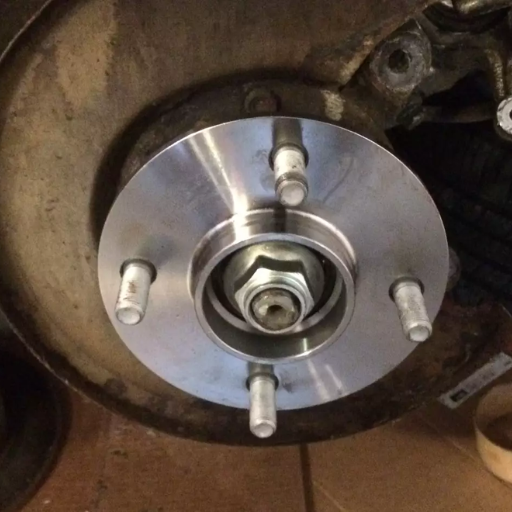
Wheel bearings generally become bad over time, and it is a combination of things like wear and tear, being exposed to harsh environmental conditions, or even installation that was improperly done. one of the biggest contributors has always been contamination—whereby dirt, water, or any debris enters the bearing and starts eating up its lubrication. The way you drive also affects it; damages can be accelerated when you hit potholes, curbs, or sudden jolts. Furthermore, poor-quality bearings, as well as wrong torque during fitting, may reduce their life span. Early identification of such concerns before they worsen can be done through regular upkeep and observations.
Impact of poor road conditions and driving habits
Poor roads and driving practices can have a very negative impact on bearings. Bumpy roads, potholes, and debris place the bearings under plenty of stress, and in my experience, their exposure to rough conditions is the main cause of bearing wear. Hard shifting, sudden stops, sharp turns, and constantly overloading the vehicle only make the damage worse. These things all raise friction, heat, and pressure, which destroy the components and lubrication of the bearing. Changing one’s driving style and steering clear of bad roads can help keep your wheel bearings in good condition.
Role of moisture and contamination in bearing failure
I believe contamination and moisture must always be taken seriously as they are among the main causes of wheel bearing failure. A mixture of water and dirt destroys the balance that the bearing assembly aims for when it enters. Let me break down the key factors to ensure you understand how this happens:
- Corrosion: Moisture in the bearing causes internal components to rust and corrode which means that it is compromised and it’s surface bears more friction that causes wear thus reduces its life.
- Contamination Impact on Lubrication: To minimize friction, bearings need clean, high-quality grease. This implies that the lubricants can be mixed with dirt, sand or even water thereby diluting their effectiveness. A compromised lubricant leads to metal-to-metal contact-enhancing damage.
- Seal Failures: Proper seals are meant to keep off moisture and other contaminants. Unfortunately, if these seals get damaged or worn out they may not guard against contamination.
- Surface Wear and Fatigue: Inside a bearing, contaminants result to abrasive particles grinding against rolling elements and raceways. Excessive abrasion can lead to surface fatigue as well as pitting causing bearing failure in the end.
To mitigate these risks, here’s what I recommend:
- Inspecting and changing torn seals should be done on a regular basis.
- Ensure that you make use of quality, well-sealed bearings.
- Avoid driving in deep water or muddy conditions whenever possible.
-
Consequently, follow correct maintenance schedules to check for early contamination.
Here’s the thing though – with some meticulous detailing, you can eliminate the chances of moisture and some other factors from jeopardizing your wheel bearings; always remember that it will always be economical to tackle an issue before it escalates.
How can I prevent wheel bearing failure?
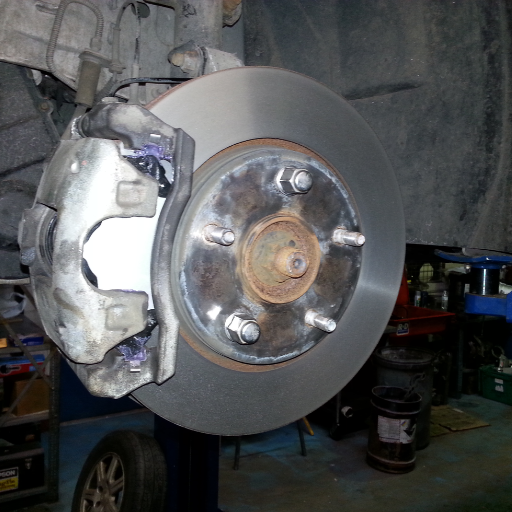
stopping wheel bearing failure all begins with turning your head towards two things: good driving habits and maintaining your car properly. First of all, during every maintenance appointment, make sure that you tell the mechanic to give the vehicle a full inspection, as it assists in finding early signs of wear and tear or contamination of the bearings. They also state that carholders should always purchase high-quality car bearings. Failing to do so would mean investing in a lower-quality bearing, which would mean the car would fail to keep its wheel bearing for long. Lastly, deep water, mud, and excessively dusty conditions should be avoided as these areas are well known by everyone to be contaminated. Moisture and debris make it easy for hooligans to gain entry through damaged or worn seals, which are also found in every car. Too much of anything is bad, and the same is the case with vigilance. There is only so much time one is able to monitor the wheel bearings during their lifespan.
Importance of regular inspections and maintenance
I can say without a doubt that appropriate vehicular maintenance is the basis of any dependable automobile. It goes without saying that there have been numerous instances during my career in which a minor issue was allowed to grow larger as a result of a lack of adequate attention to it during routine inspections. No matter what kind of service your vehicle needs to roll out, be it fixing wheel bearings, changing seals, and any other essential parts, accomplishing these not only helps keep you safe but also drastically reduces repair expenses in the long run. For me, looking after a vehicle is proactive, and there seems to be no other way of looking at it; dealing with a smaller issue today is less expensive than dealing with a larger one tomorrow.
Proper wheel alignment and its effect on bearings
Your wheel bearings depend heavily on proper wheel alignment. What I have seen is that poorly aligned wheels exert uneven pressure and strain on the bearings causing them to wear out too soon. The misalignment does not only affect bearing, but also its effect extends to tire life and fuel consumption. Alignment restores normalcy for these parts reducing unnecessary stress thus enabling a smooth functioning, therefore, longer life of the bearings. In my opinion, checking the wheel alignment during regular maintenance schedules is highly recommended as an easy way of keeping away from severe complications inthe days ahead.
Avoiding water and mud when possible
I have found it necessary to avoid water and mud as much as possible so that wheel bearings can be preserved. When water and mud enter the bearing, they dilute the grease and introduce contaminants, causing increased wear and corrosion. I have seen this leading to bearing failure very easily. Although there may not always be a chance for complete avoidance of these conditions, prompt action such as washing and inspecting the bearings after exposure can count a lot here. This routine has helped me greatly in preventing costly repairs and ensuring top performance.
Reference
- Diagnosing And Repairing Wheel Bearing Noise – Tomorrow’s Technician
- Signs of a Bad Wheel Bearing – Car Care Tips by Wiygul
- Diagnosing That Wheel Bearing Noise – MyCar
Frequently Asked Questions (FAQs)
Q: How can I tell if my wheel bearing is bad?
A: Common symptoms of a bad wheel bearing include a growling, rumbling, or howling noise that increases with vehicle speed. You may also notice uneven tire wear, steering wheel vibrations, or a feeling of looseness in the wheel. If you experience any of these bad wheel-bearing symptoms, it’s important to have your vehicle checked by a professional.
Q: What does a bad wheel bearing noise sound like?
A: A bad wheel bearing noise often sounds like a growling, rumbling, or howling noise that changes in proportion to vehicle speed. Some people describe it as a grinding or squealing sound. The noise may get louder when turning or shift in tone when you turn the steering wheel.
Q: Can I drive on a bad wheel bearing?
A: While you can drive on a bad wheel bearing for a short distance, it’s not recommended. A failing bearing can cause significant damage to your vehicle and compromise your safety. If you suspect a bad wheel bearing, it’s best to have it inspected and repaired as soon as possible to avoid potential wheel bearing failure while driving.
Q: How do I determine if the noise is coming from the front wheel bearing or rear wheel bearing?
A: To determine if the noise is coming from the front or rear wheel bearing, try shifting your car’s weight while driving. If the noise gets louder when turning left, the issue is likely on the right side, and vice versa. For front wheel bearings, the noise may change when turning the steering wheel. For rear bearings, the noise might be more constant. A mechanic can perform more precise tests to pinpoint the exact location.
Q: What’s the difference between wheel bearing noise and tire noise?
A: Wheel bearing noise typically increases in proportion to vehicle speed and often changes in pitch when turning. Tire noise, on the other hand, is usually more consistent and may change with different road surfaces. Wheel bearing noise is often described as growling or howling, while tire noise is more of a constant hum or roar.
Q: How can I check for play in the wheel if I suspect a bad bearing?
A: To check for play in the wheel, first ensure the car is safely supported on jack stands. Grasp the tire at the 12 and 6 o’clock positions and try to rock it. Then, check at the 3 and 9 o’clock positions. Any noticeable movement could indicate a bad wheel bearing. However, it’s best to have a professional mechanic perform this test for safety and accuracy.
Q: Can a bad wheel bearing cause damage to other parts of my car?
A: Yes, a bad wheel bearing can cause damage to other parts of your car if left unaddressed. It can lead to uneven tire wear, damage to the CV joint, and in severe cases, can cause the wheel to separate from the vehicle. This is why it’s crucial to address wheel bearing issues promptly when you notice symptoms like noise or vibration.
Q: How long can I expect a wheel bearing to last?
A: On average, wheel bearings can last between 85,000 to 100,000 miles. However, this can vary depending on driving conditions, vehicle maintenance, and the quality of the bearing. Some may fail earlier, especially if exposed to harsh conditions like water, dirt, or extreme temperatures. Regular inspections can help catch bearing issues before they become severe.
